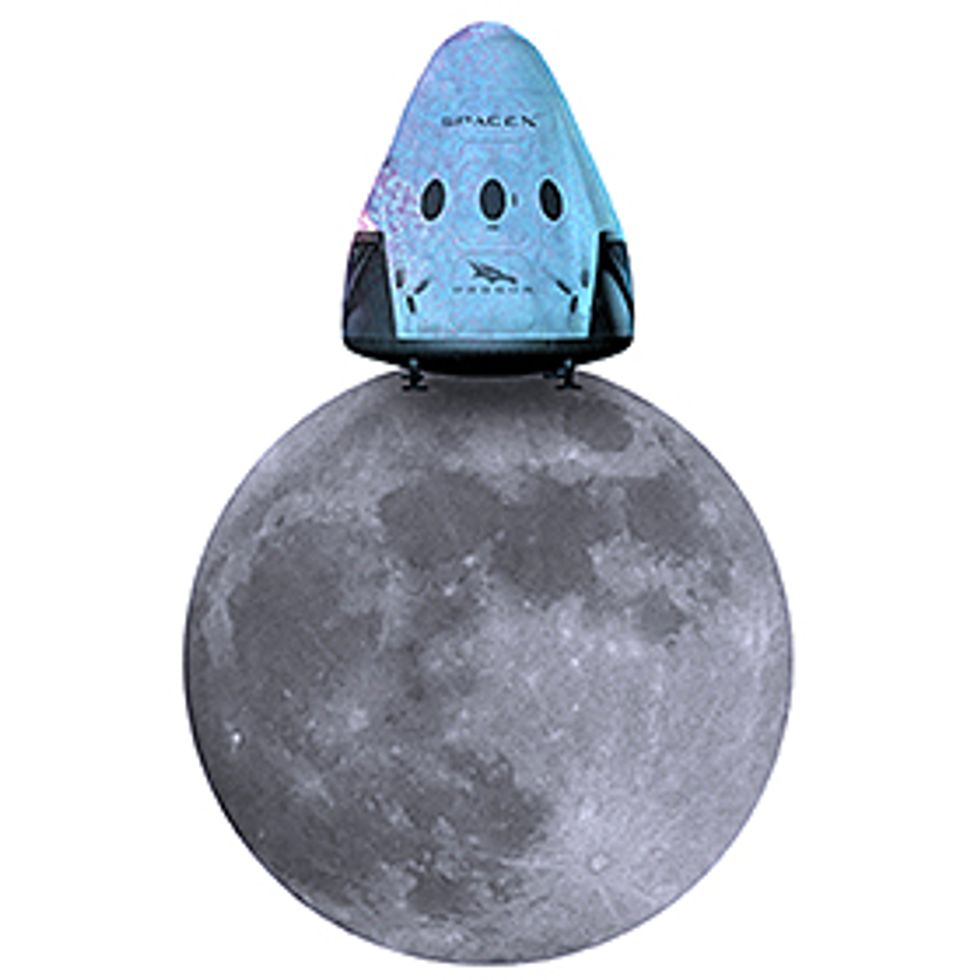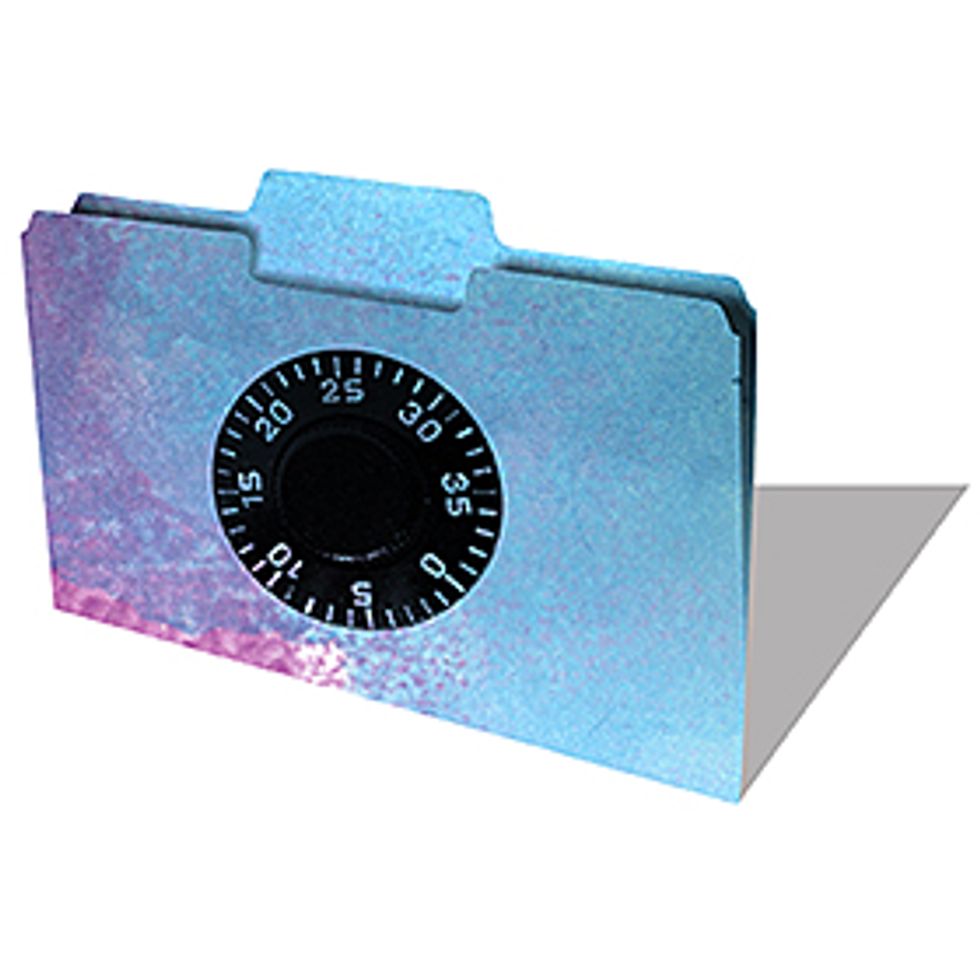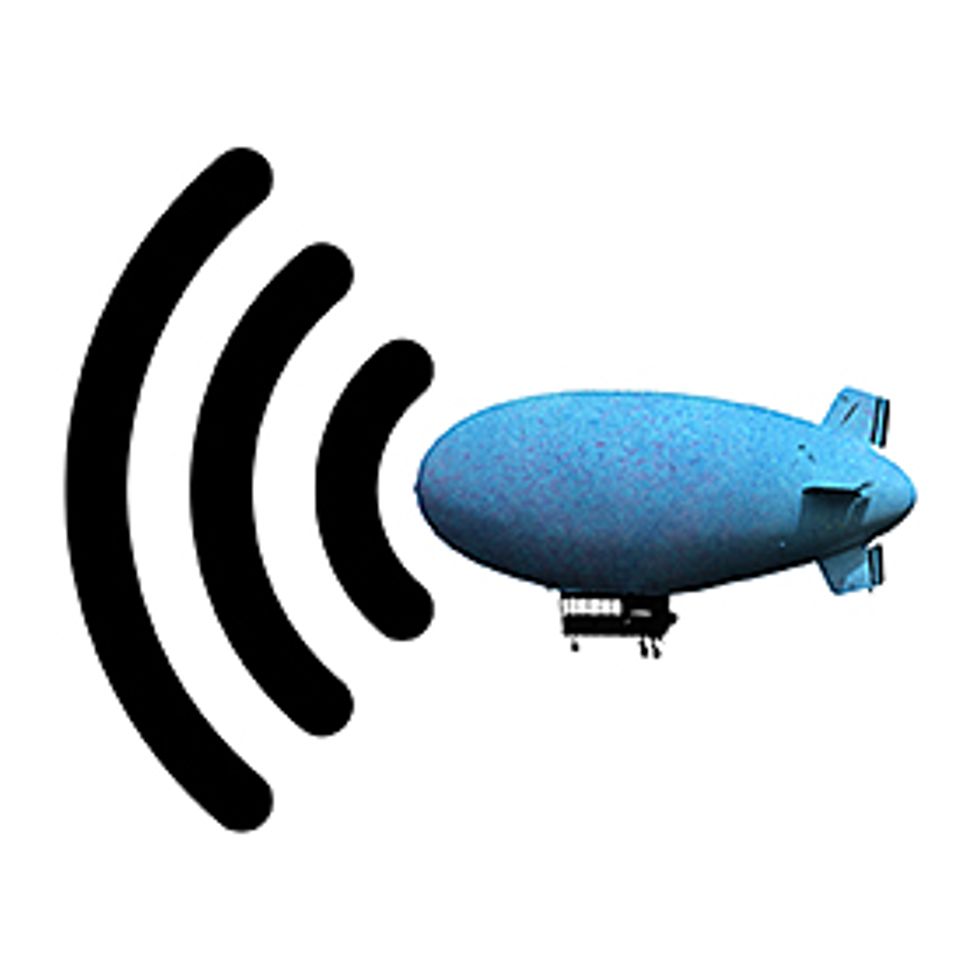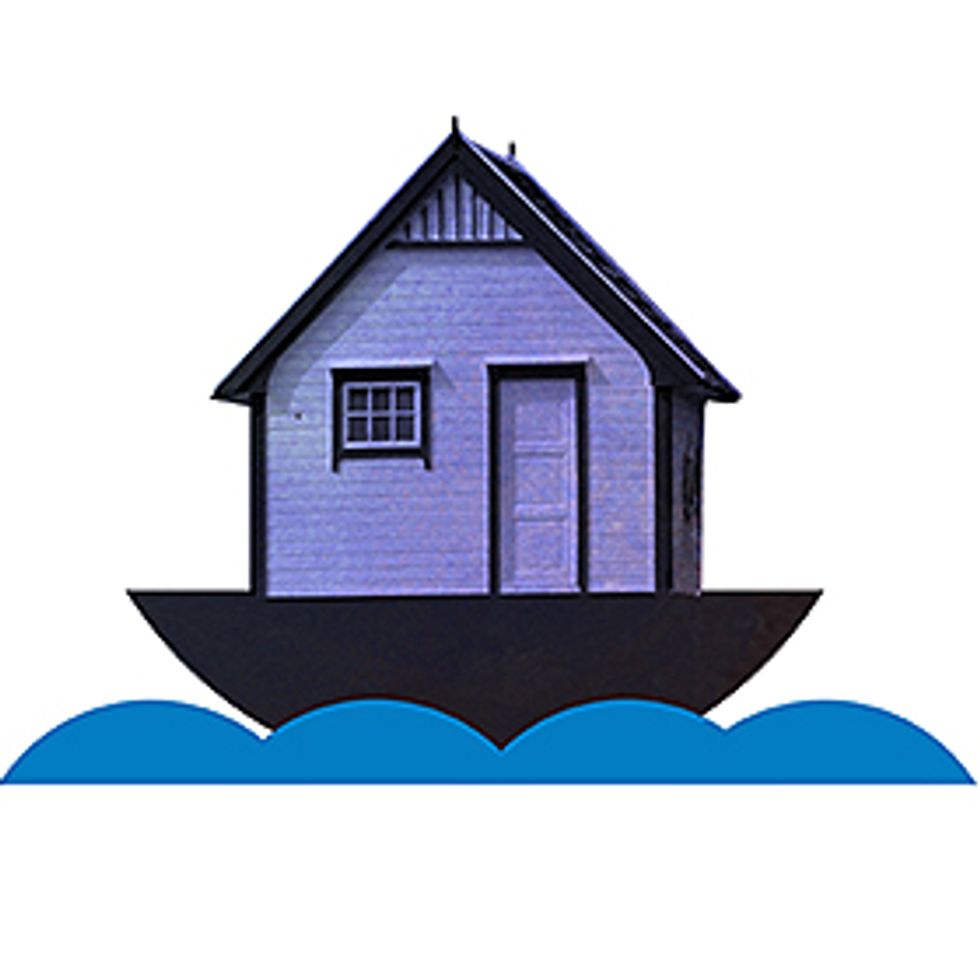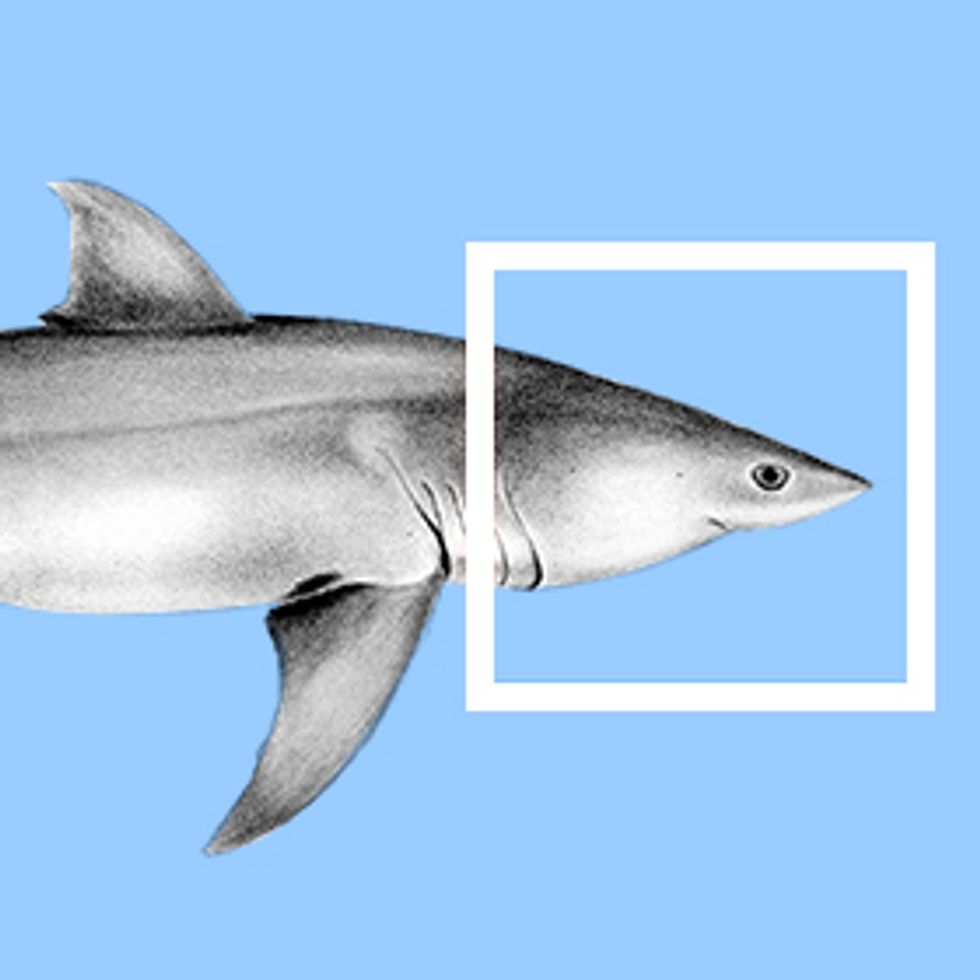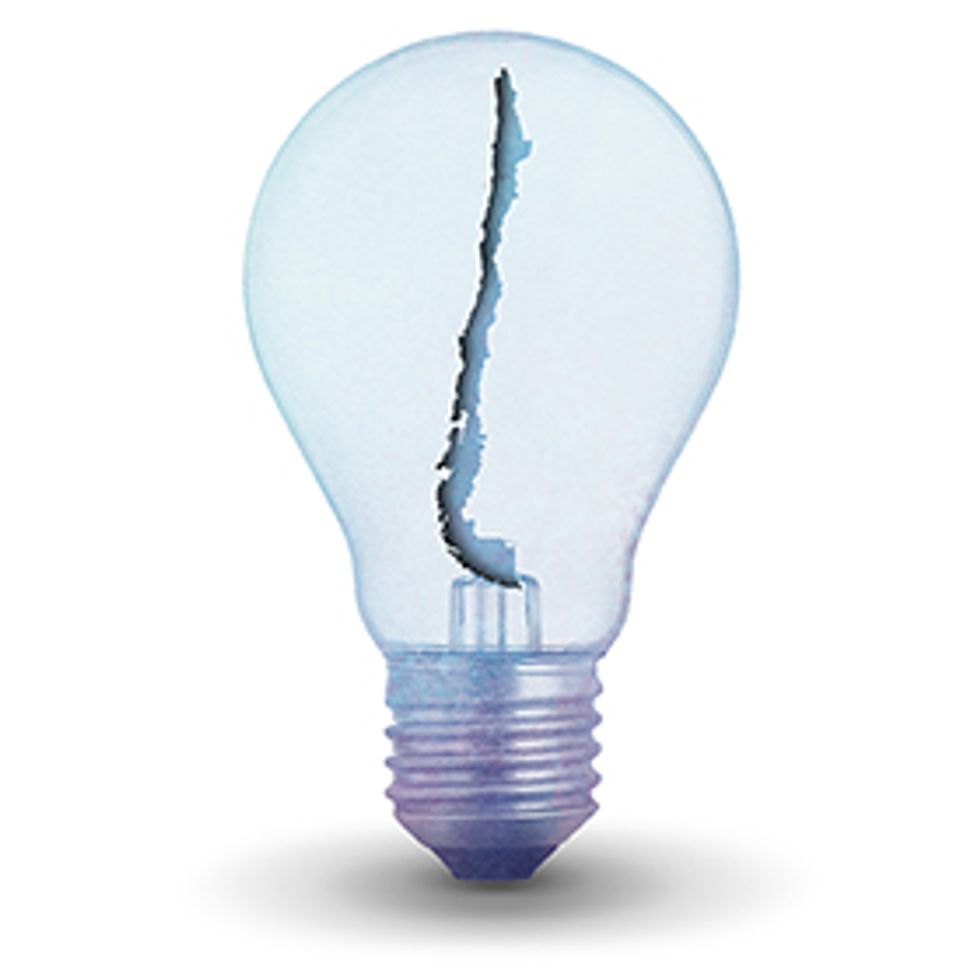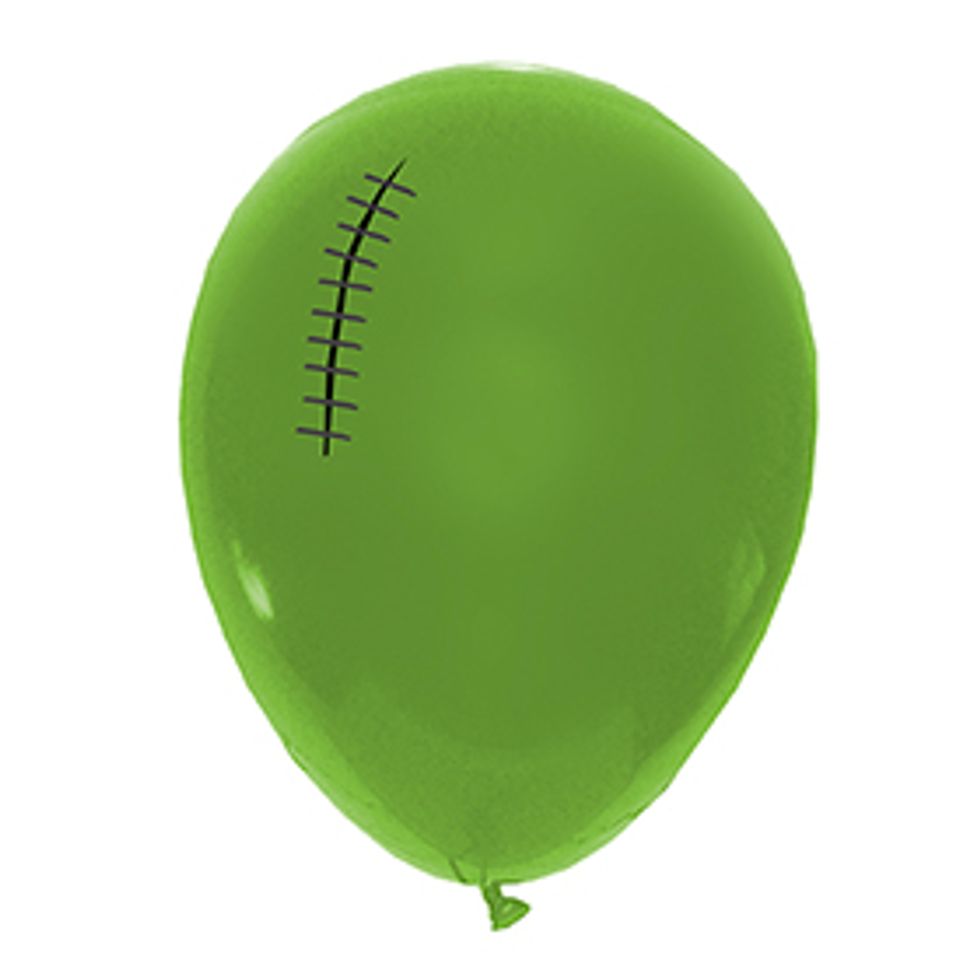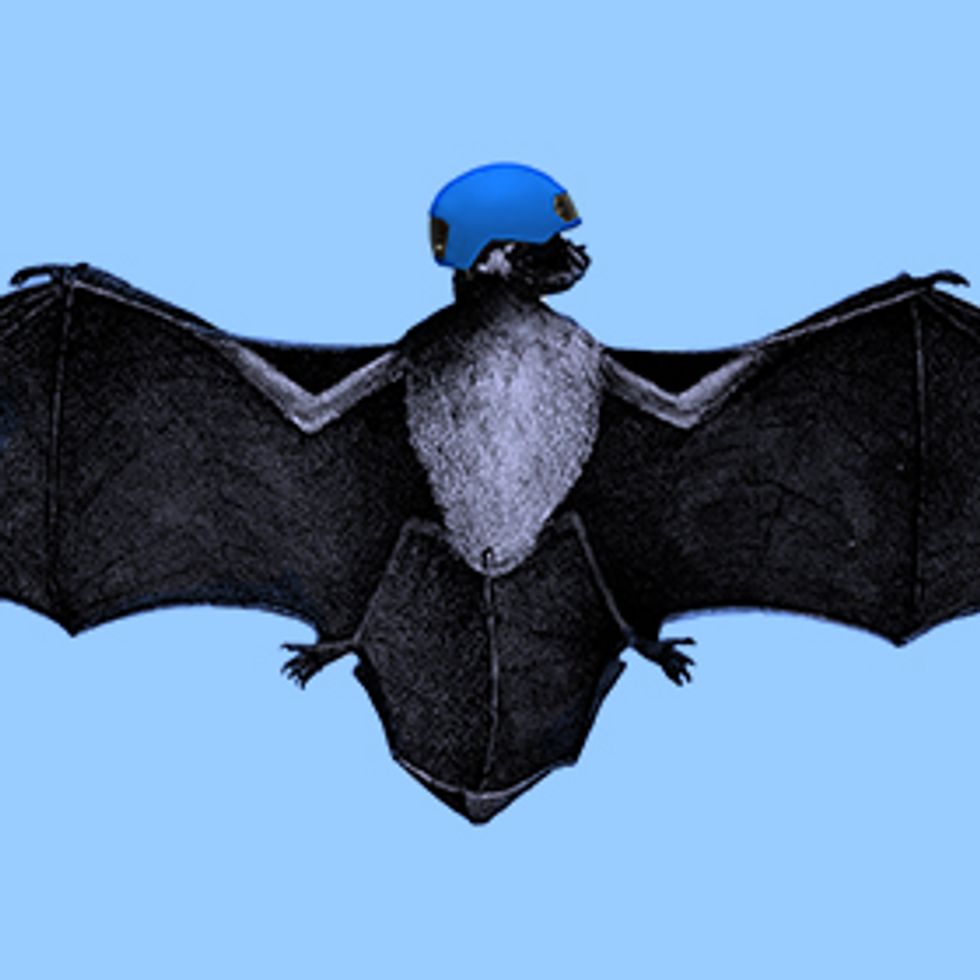Bats, Blimps, and Giant Camera Chips: 2018’s Top Tech Quick Hits
A dozen intriguing tech projects to look for in the coming year
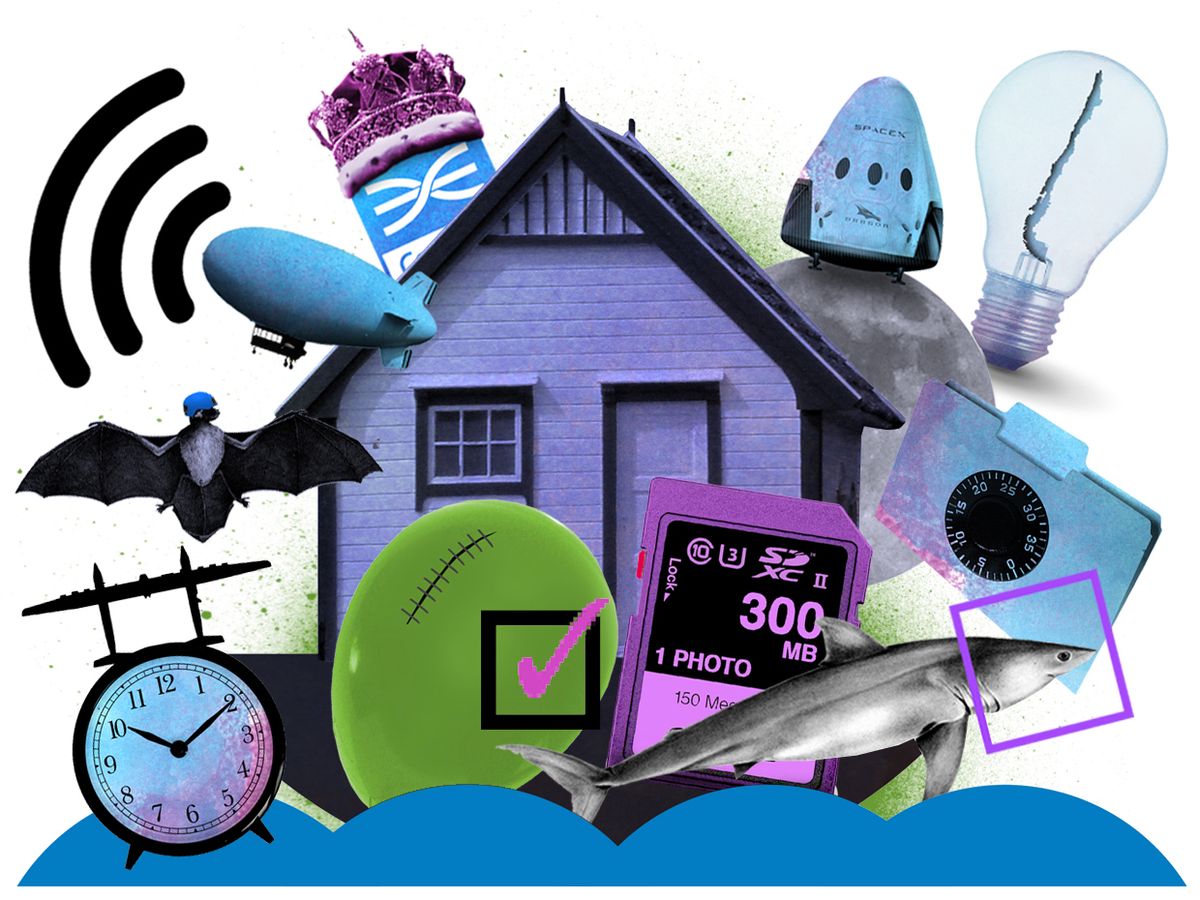
Moonward Ho!
In December 1968, Apollo 8 became the first manned mission to orbit the moon. A half-century on, SpaceX, Elon Musk’s spaceflight company, is vying to do the same thing, offering to send two private customers on a lunar flyby aboard its Dragon 2 capsule. Meanwhile, German startup Part-Time Scientists aims to land the first 4G LTE base station on the moon this year. The base station will relay signals between the company’s yet-to-be-launched rovers and mission control back on Earth, but it could also be used by future lunar explorers. Further-out moon ventures include an inflatable orbiting habitat being developed by Bigelow Aerospace. If all goes according to plan—admittedly, a big “if”—2018 could mark the beginning of the return of humans to the moon. And this time it’ll be for a good long stay. [For more on lunar plans in 2018, see "China Promises the Moon."]
EU Doubles Down on Data Privacy
On 25 May, the European Union’s General Data Protection Regulation (GDPR) will take effect, with tough rules aimed at protecting the privacy of people living in the EU. Europeans already have many more privacy protections than, say, U.S. citizens, including the “right to be forgotten.” But the GDPR goes much further: It protects virtually every kind of data pertaining to individuals, including medical records, online transactions, and social media posts. It also gives EU residents the right to opt out of automated decision making—via a machine-learning algorithm, for example—and to demand an explanation when an automated decision involves them in some significant way. The GDPR applies to companies doing business in Europe as well as companies that handle the data of Europeans. Unsurprisingly, firms far and wide are scrambling to comply.
Blimp Cell Towers Head Skyward
This year, Altaeros Energies plans to launch the first of its tethered-blimp cell SuperTowers. Each aerostat, floating up to 600 meters above the ground, will provide coverage equal to 30 traditional cell towers. The blimps are intended for remote locations where broadband service is too difficult or costly to supply by conventional means. Several other companies aim to do similar things, including Google, with its Project Loon balloons, and Facebook, with its solar-powered Internet drone, Aquila. Altaeros’s other big push is in high-altitude wind turbines. Who knew you could build a diversified business around lofting tech-laden tethered balloons?
A Home That Floats
Worldwide, hundreds of millions of people live on floodplains, where they’re at risk of losing their homes, if not their lives, to rising water. Such risks could be reduced if their homes could float. That’s the idea behind LifeArk, a prefabricated modular dwelling that is cheap to make, easily transported in shipping containers, and then quickly assembled on-site using standard tools. A project of the architectural firm GDS, the 6-square-meter units can be bolted together into larger structures and connected to the main power grid and sewer system, if available. For off-grid locations, the units come with solar panels, rainwater harvesting and filtration, and waste management systems. The first prototypes will be floated, er, installed on a lake in Lindale, Texas, about 140 kilometers east of Dallas, later this year.
Every Shark Counted
Sharks and rays are threatened worldwide, but even scientists who study them haven’t been able to quantify the extent of the problem. Vulcan Inc., in Seattle, a philanthropic entity of Microsoft cofounder Paul Allen, aims to fill in the missing data. Its three-year Global FinPrint project is counting sharks, rays, and other marine life around coral reefs, using remote underwater video stations as well as a video-processing AI that helps identify animals caught on camera. The survey of 400 reefs is scheduled to wrap up this year. Already, the data has been used by Belize to create a ray sanctuary, and it’s informing the Dominican Republic’s efforts to protect sharks. The project has also generated intriguing clips of eels, sea turtles, and sea snakes—which admittedly don’t have quite the viral pull of cat videos.
150 Megapixels in Your Camera
Sony continues its domination of digital camera sensors with the release this year of the IMX411, a CMOS sensor chip capable of an “absurd” (as one blogger put it) 150 megapixels. The chip will also shoot ultrahigh-definition 8K video at 30 frames per second. Two other sensors, the IMX461 and IMX211, will offer 100-megapixel resolution. All three chips are intended for medium-format digital cameras—Sony’s as well as other companies’—and for applications like large-area surveillance, digital archiving, and industrial inspection. If you’re thinking you really need such a camera, better stock up on storage, too: Each 150-megapixel image will translate into a 300-megabyte file.
Linking Up Chile’s Long, Skinny Grid
From north to south, Chile extends 4,300 kilometers, but at its widest point, it’s just 350 km. This elongated profile poses a challenge for the country’s grid manager, Coordinador Eléctrico Nacional (CNE). Until recently the Chilean grid consisted of four separate electricity networks, so there was no way to move, say, solar energy generated in the northern desert to the country’s populated middle. Last year, though, construction wrapped up on the 580-km Mejillones-Cardones interconnection, finally linking up the northern and central grids. Later this year, a new 750-km transmission line will better connect points within the central network, and CNE plans to fund another US $600 million in transmission projects, including a 500-kilovolt line for the south. A robust transmission network could allow Chile to tap into ocean and tidal energy—with 4,300 km of coastline, it’d be a shame not to.
A Subway Fit for a Queen
Late this year, the first major section of London’s £14.8 billion Crossrail train network is set to open. When the new rail service fully opens in December 2019, it will add 42 kilometers of tunnels to the capital’s transit system, along with 10 new stations and upgrades to an additional 30 stations. The 10-year effort—the biggest construction project in Europe—promises to relieve congestion and shorten travel times for up to 200 million passengers a year. Although the Elizabeth Line is named for England’s longest-reigning monarch, the queen strikes us as an unlikely commuter.
Error-Detecting Voting Tech
The two big concerns about electronic voting are that a system error will cause votes to be inadvertently miscounted or that a hacker will cause votes to be intentionally miscounted. Starting this year, the state of Colorado plans to roll out a technique that proponents say will guarantee the correct outcome: risk-limiting audits. This statistical approach, which the state successfully rolled out in the November 2017 election, relies on comparing a random sample of paper ballots with the corresponding digital votes. The closer the election result, the more ballots get audited. If the audit finds an error in the reported outcome, a full hand count will be done. But if the audit finds the reported outcome to have a high likelihood of being correct, no hand recount is needed. The company developing the software for Colorado, Free & Fair, is open-sourcing it so that other states can adopt it.
Frankenstein Turns 200
This year marks the 200th anniversary of the publication of Frankenstein. Although Mary Shelley began writing her gothic novel on a dare to devise a good ghost story, she also wove in elements of the latest scientific theories of the day, including Galvani’s studies of “animal electricity” and contemporary debates over human consciousness. Thus did Shelley spark a pop culture meme that today is as popular in Hollywood as it is revered in academia. Universities around the world will host Frankenfests throughout the year to celebrate the book, its creator, and her ideas.
Waiting for Stratolaunch
Announced in late 2011, Paul Allen’s humongous rocket-launching aircraft was supposed to take its first test flight in 2016, which got pushed to 2017 and then 2018. Most recently, Allen’s company said it would conduct engine tests at NASA Stennis Space Center in the second half of this year. Next year could finally see the Stratolaunch’s maiden voyage. The idea of the 117-meter-wide, six-engine plane is still appealing: Taking off from a commercial runway, it will ascend to about 9,100 meters carrying one or more rockets, for a total payload weight of 230,000 kilograms. (That’s an order of magnitude greater than the payload of Orbital ATK’s Stargazer.) From that altitude, a rocket is clear of more than half of the planet’s atmosphere and thus far easier to propel to low Earth orbit. The project’s long timeline only goes to show that reducing the cost and complexity of rocket launch is still about as hard as rocket science itself.
Good News for Bats
When bats meet wind turbines, it’s invariably the bats that lose. According to one study, U.S. wind power killed more than 600,000 bats in 2012. Since then, the world’s wind-generating capacity has doubled. Curtailing wind turbines during periods of peak bat activity does reduce fatalities, but it also cuts into an operator’s revenues. This year, NRG Systems, based in Hinesburg, Vt., will release a commercial version of its ultrasonic bat-deterrent system, which requires no curtailment. The equipment sits on the turbine’s nacelle and emits ultrasonic sound between 20 and 50 kilohertz—the same frequencies North American bats use for echolocation. A bat nearing the turbine will immediately change direction, thereby avoiding its date with destiny.
